OUR BURNING PLANET OP-ED
Biodiversity bomb: River Club development in Cape Town poses threat to variety of birdlife and wildlife
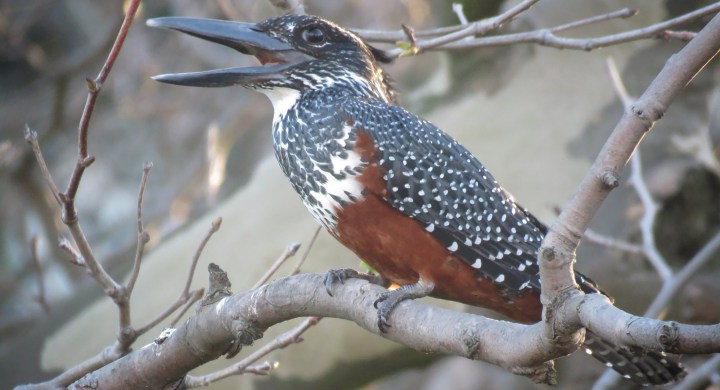
For the past 30 years, the strident call of the giant kingfisher flying up the lower reaches of the Liesbeek River could be heard. Now that call may be silenced forever by the proposed River Club development.
Isabella Hayden is a long-time birder, a former member of the Two Rivers Urban Park Association, a former member of the Friends of the Rosebank and Mowbray Greenbelt, and a concerned member of the public.
In April, it was announced that the controversial Liesbeek Leisure Properties Trust (LLPT) development in Observatory was given the green light by the City of Cape Town. The River Club development in its current form will destroy the habitat and breeding sites of a variety of birdlife and wildlife, including three species of kingfishers (giant, malachite and pied).
The old river course is the small section of river running from the traffic lights and bridge (Liesbeek Parkway and Station Rd/Observatory Rd intersection) northwards, parallel to Liesbeek Parkway. It is not a pretty area, to be sure, but it is important because the kingfishers use this section of the river, and it’s the only piece of the Liesbeek in that area that has suitably high, vertical banks for their breeding holes. The rest is mostly canalised with concrete and cement.
This image shows where the old river course is, connected by pipeline (blocked) under Observatory Rd to the Liesbeek on the other side of the road. The canalised section east of the River Club was built in 1980 to divert the Liesbeek towards the Black River.
The City’s response to the proposed development is conflicted and problematic. On the one hand, there’s the Municipal Planning Tribunal which looks at land use and development, and which has long been perceived to place economic development ahead of all other considerations. US retail giant Amazon was not looking specifically at the River Club for office space — Amazon was looking for additional space in Cape Town, and they were offered a choice of three sites by the City, including this one, with its beautiful and central location.
On the other hand, the City of Cape Town is fully aware of the importance of biodiversity, and is seemingly proud of it. For example, Cape Town came out tops in several categories in the recent (international) City Nature Challenge, which the City itself advertised widely and supported.
With the River Club development, however, the City seems to largely be willing to sacrifice some biodiversity by destroying a wetland habitat (wetlands being the most threatened of all habitats worldwide). The most detailed and independent analyses of heritage and environmental considerations are provided by the City’s own competent authorities at Heritage Western Cape (HWC) and the Environmental Management Department (EMD), which both concluded that the development neither meets the City’s policies on the environment nor the HWC’s standards.
In March, the City’s own EMD lodged an appeal against the Environmental Authorisation (EA) granted by the provincial Department of Environmental Affairs and Development Planning, saying the EA did not give sufficient weight to the environmental impacts that would result from the scale of the development.
“It is not acknowledged in the EA that the area of the Liesbeek River that will be infilled to create a stormwater swale, represents part of the last remains of the historic Liesbeek River channel, which has ecological and ecohistorical importance. It is impossible to mitigate the loss of a natural habitat such as the Liesbeek River,” read a department statement
Planting up the swale with indigenous wetland plants afterwards does not undo the damage and will not replace the habitat that exists there now.
The developers, LLPT, plan to replace the River Club with the development pictured below.
Notice that the original river course (just west of the yellow dotted line) is filled in and planted over, and this is the problem.
“The western boundary will be converted into a vegetated swale (sunken ground covered with plants which will absorb and filter stormwater),” according to the City of Cape Town Media Office.
Marc Turok of Two Rivers Urban Park Association (Trupa) suggests the reason behind infilling the old river course is so that this part of the Liesbeek can be declared dead; then the developer need not leave a setback of 35 metre from the water’s edge as a buffer zone. As can be seen from the development layout, the buildings will extend from one edge of the property to the other, barring the eastern side.
Both the City and LLPT seem to have overlooked that the old river course is teeming with life, even though it has been allowed to become degraded and covered with invasive weeds due to lack of maintenance and intentional, illegal infilling by the River Club owners. The City, through its own lack of maintenance and neglect, has caused “the natural channel of the Liesbeek River [to become] disconnected from the Liesbeek River and now [it] functions as a backwater wetland”. This is from the Biodiversity Impact Assessment for this development, compiled by Dr Liz Day with input from Dr Tony Williams (avifaunal specialist). They go on to say: “it does however provide habitat to important bird species and may provide breeding areas to western leopard toads”.
Nick Fordyce has been very active with the Friends of the Liesbeek (FOL) and has a master’s in environmental law. He has strong words on the subject.
“The River Club development is an appalling idea, clearly being driven by a select few with little appreciation for the environment. It is wholly inappropriate that the developers label the site as degraded. It is only degraded because they [the owners of the River Club] have illegally dumped numerous times on the site — often by dumping illegal fill on the site from construction sites elsewhere, to raise their banks. This is in direct contrast to local communities right along the full length of the Liesbeek, who over many years, and in some cases decades, have volunteered their time to help clean, rehabilitate and restore the Liesbeek and its surroundings. Organisations like the Upper Liesbeek River Garden, Friends of Paradise Park, Friends of the Rosebank and Mowbray Greenbelt, Communitree and the Friends of the Liesbeek (the latter which work annually to bring in over R500,000 to run the full-time Liesbeek Maintenance Project).
“This site represents a tiny fragment of natural land in a biodiverse city that is home to a number of critically threatened endemic species (the Moraea aristata and western leopard toads being the flag bearers) that is also steeped in rich heritage — but it seems to now represent a case of capitalism vs the environment. If this goes ahead, it rather begs the question of whether we ought to have environmental legislation at all!”
The City is back-tracking on its 2015 Biodiversity agreement with CapeNature, which “protects in perpetuity” a large part of the area, including the section of the river in question. These protected areas run along the Liesbeek River and the associated wetlands, and the Black River, including the Raapenberg Bird Sanctuary and associated wetlands.
LLPT seems to want to project an environmentally sound image — the River Club web page describes the new development as having 65% green space (although it’s very hard to see how that could be possible), and five-star green building and design principles. In their Planning Policy Report, there seems to be the intention to comply with Western Cape Spatial Framework (2104) policies to protect biodiversity and ecosystem services and to rehabilitate degraded aquatic systems. But that is contradicted by the plan to destroy an existing habitat by infilling the old river course. A more biodiversity-conscious approach would be to leave the setback undeveloped and restore the river to a healthy condition.
The developer’s Environmental Management Plan speaks of conducting faunal search-and-rescues as a mitigating measure prior to starting each phase of construction, but in practice, only a small fraction of the wildlife could be relocated. Most of the wildlife that cannot fly or escape otherwise, will be killed during the construction process.
Has the City been playing into the developer’s hands? Leslie London of the Observatory Civic Association (OCA) said “the original river course [is] not being managed effectively and is not being replenished by fresh water from the Liesbeek. The intended connection between the river south and north of Observatory Rd is choked by alien plant growth in the river that is not cleared, nor are the pipes regularly cleared of debris and garbage. Instead of fixing the problem, which is the City’s responsibility, the connection has been allowed to become and remain blocked, allowing the developer to attribute uselessness to the portion of the Liesbeek distal to the blockage alongside the River Club and conveniently motivate for its infill.”
From a 2013 report — the secretary of FOL, Francine Becker, notified the councillor for Observatory (Brett Herron, at that time) that large trucks belonging to a certain demolition company were seen dumping soil into the river and on its banks all weekend. Becker said, “soil dumping affected bird habitats…the area was a prime kingfisher breeding ground, a grey heron fishing area and a place where yellow-billed ducks roosted.”
She also pointed out that raising the soil level would reduce the rate of stormwater draining from the parking area and roads. The River Club’s unauthorised dumping of infill into the river, close to the inlet pipe, to stabilise the bank for their golf course, was reported to the city as a bylaw infringement. It has not been established if the city took any action.
Turok of Trupa said, “There have been serious academic papers and doctoral theses written about the need to restore the Liesbeek and many note its great heritage value (also as a freshwater biodiversity resource). Some clearing of debris has been done recently but the fundamental fault that is restricting flow has not been attended to.
“Prof Kevin Winter of UCT, a noted specialist on the Liesbeek River, has done years of research on it… his top students have also expressed support for the established policy to restore flow and yet our City disregards its own policy and advice from independent specialists.”
In 2019, Delft University researchers under Prof Winter produced a report showing that investment in rehabilitating the existing river would be both feasible and desirable, and say, “Filling up the original Liesbeek River channel would have negative impacts on seasonal flooding, ecology and the water quality.”
This part of the river, although neglected and degraded, is far from dead. Looking over it a month ago, a group of birders could hear hundreds of clicking stream frogs calling, despite the degradation. This quiet section of the river with its still waters is the perfect habitat for any number of indigenous frog species and their tadpoles, such as the critically endangered western leopard toad, and the Cape river frog, not to mention dragonflies, crabs, fish, snakes, water mongoose and Cape clawless otters which are in the area.
Furthermore and according to Jessleena Suri et al, “The occurrence of three species of kingfisher catchment is important given that they are ecosystem engineers which can create habitat for other organisms (reptiles, amphibians and insects) through their nesting burrows.”
Late in May 2021, another group saw or heard 39 species of birds in less than two hours, in or around the rivers bordering on the River Club, among them the resident malachite kingfisher, black-crowned night heron and African black duck. Nick Fordyce’s wildlife photos show some of the diversity of life in the area.
In conclusion, the existing river banks should be left as they are and not turned into a swale. The vertical banks allow the three species of kingfishers (malachite, pied and giant) to breed, as well as the river itself providing habitat for frogs, toads and other biodiversity. A swale is not suitable for kingfisher breeding. Without breeding sites, they will disappear from the area. The setback of 35 metres should be retained, and the river course restored to full functionality and turned into an ecological asset.
All this information was given to the City and the developers, but they have chosen to ignore specialist environmental and heritage input. DM
The Observatory Civic Association, under Professor Leslie London, has started a campaign to raise funds to challenge the approval of the development in the high court. Contributions can be made at BackaBuddy.

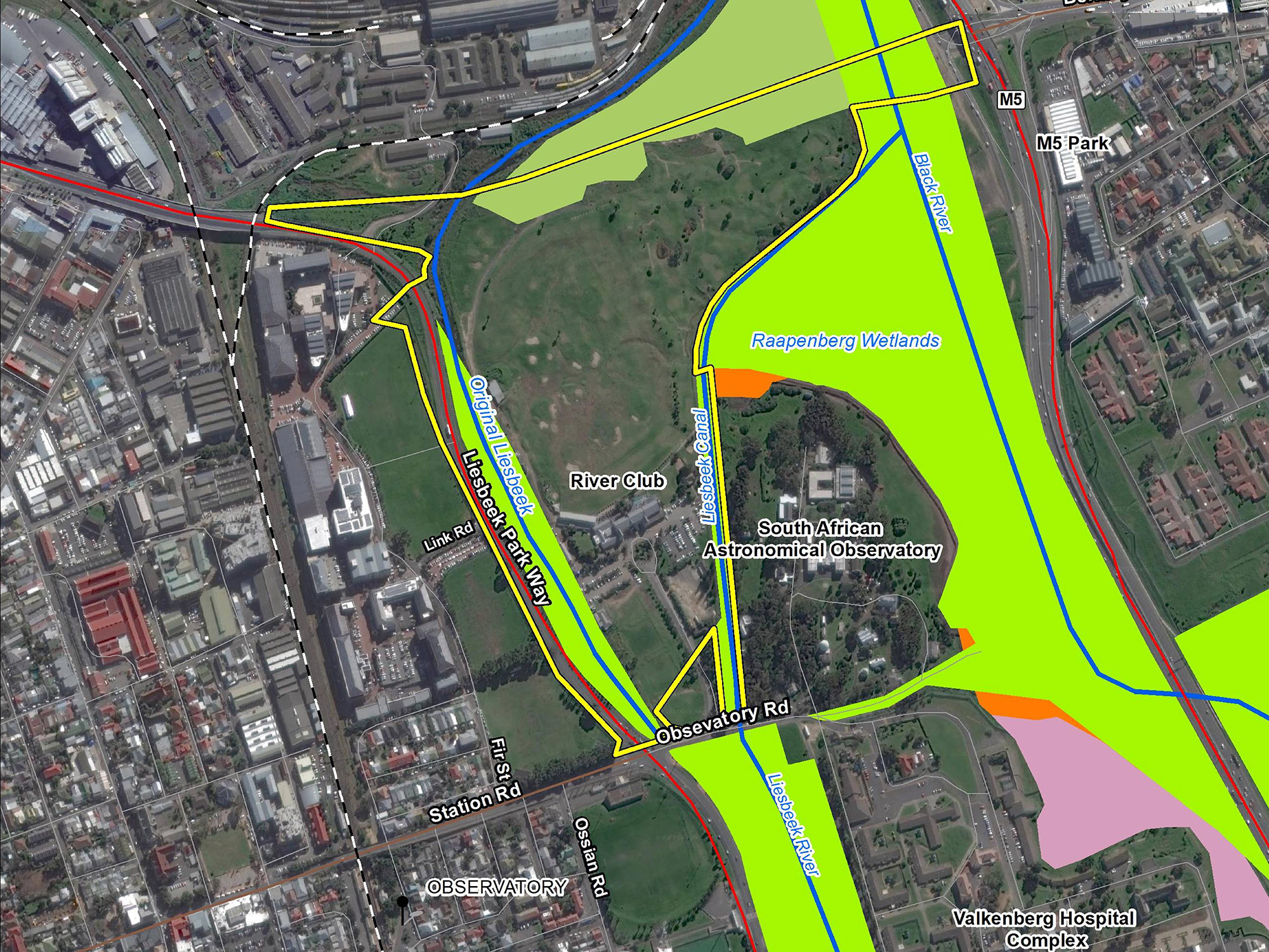
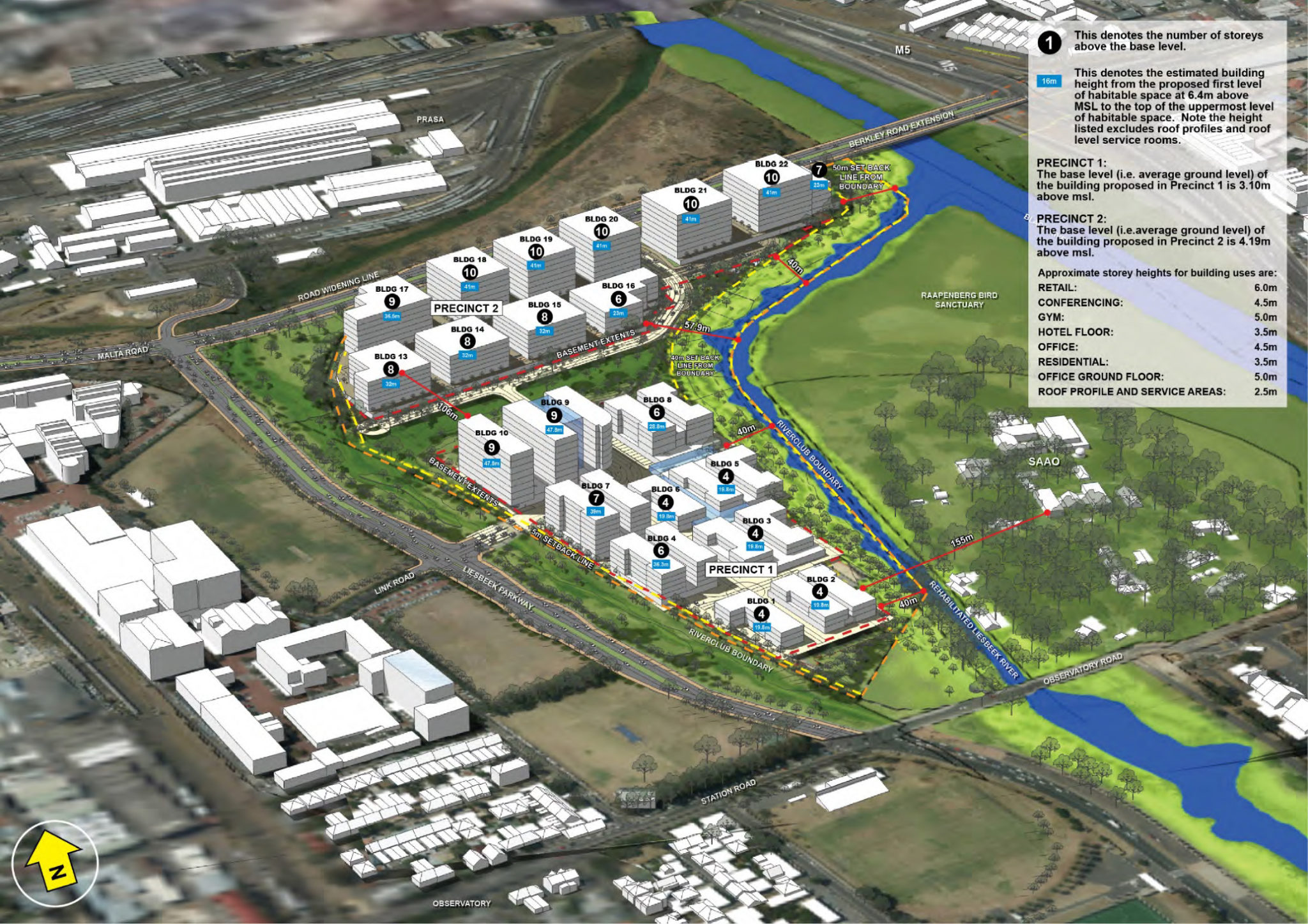
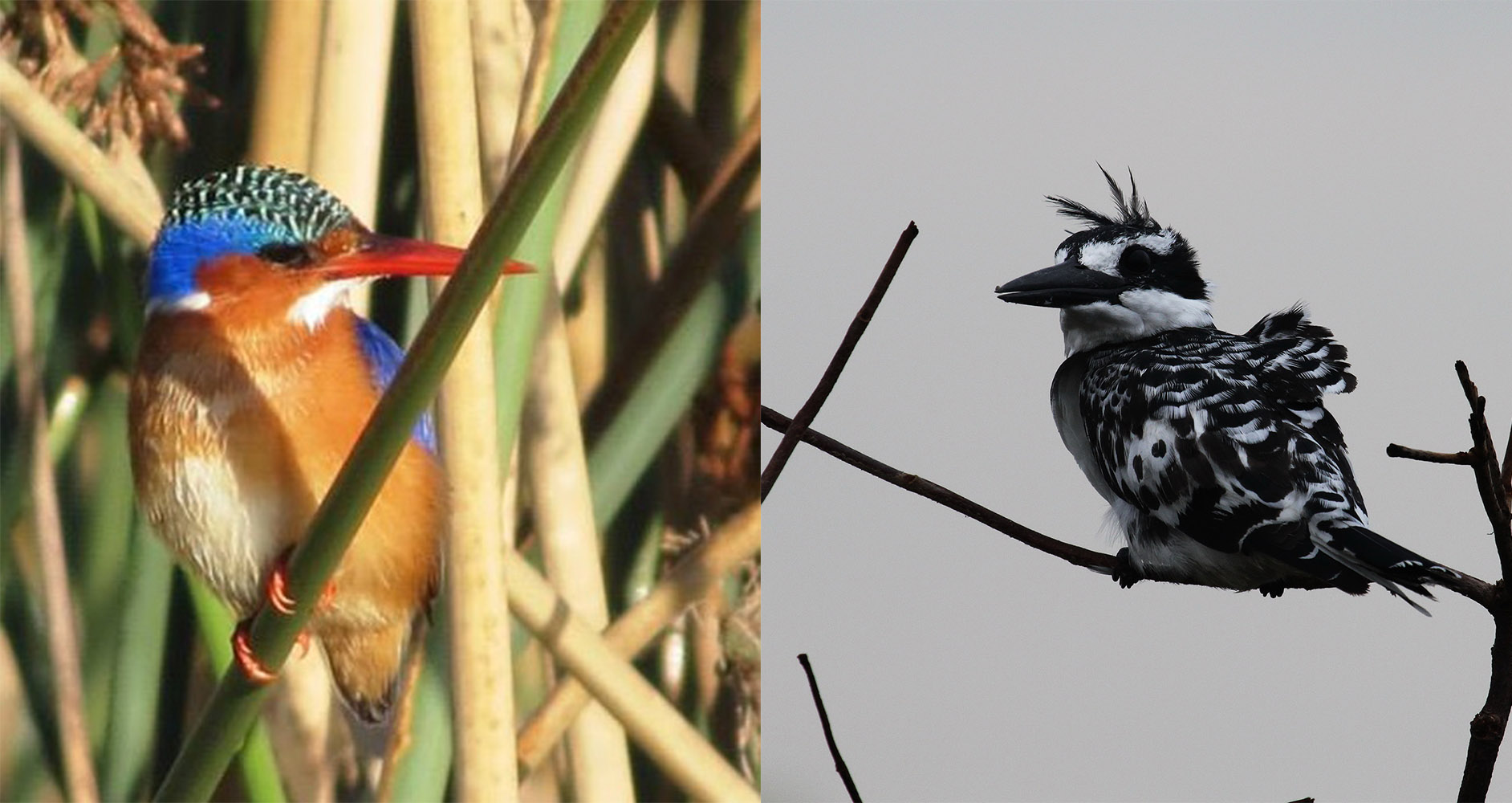










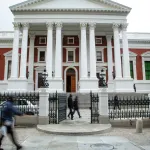










 Become an Insider
Become an Insider
The city council and LLPT or whatever didn’t overlook the fact that it is teeming with wild life ,they give a horses #&#,money is what it is about ,it also seems that this will create a buffer zone against spatial planning. Propagating the natural beauty and scenery of cape Town in the plush rich upper income areas is okay, but when it comes to nature conservation in a historical area, given the history of the khoi San,surely a more appropriate area can be found.Big bucks and big developers see most councils, politicians turning a blind eye and forgetting there purpose .Why not put the development in Atlantis or outside Paarl or close to the airport.Oh no we will lose a lot of Money.